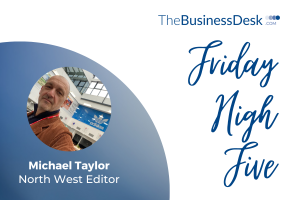The Ultimate Guide to Putting on a Successful Conference

Conferences are a vital part of doing business for many companies. They provide invaluable opportunities for networking, generating leads, raising brand awareness and connecting with customers and partners face-to-face. With careful planning and execution, conferences can take your business relationships to the next level.
Putting on a successful event, however, requires thoughtful consideration of many elements, from the venue and agenda to promotion and how you’ll integrate technology. This guide will walk you through the key steps involved in organising a productive conference that meets your goals. Whether it’s your first event or your fifteenth, these tips will help you maximise value for both your company and your attendees.
Choosing a Location
The venue you select will set the tone for your entire schedule, so it’s crucial to find the right fit. When evaluating options, first consider accessibility – is it easy for attendees to get to? Look at capacity as well – does it accommodate your expected headcount comfortably? Review what amenities are included, such as meeting rooms, audio-visual equipment and Wi-Fi. Hotels often have built-in advantages as they offer lodging, dining and event space all in one. However, convention centres provide more flexibility with layouts and larger exhibit halls.
You may also find unique venues like museums, theatres or outdoor spaces that lend a distinctive flair. Be sure to closely examine contracts to negotiate optimal rates and terms. Also, walk the space in advance to map out room setups and traffic flow. Pay attention to nearby parking, restaurants and hotels if not provided by the venue. Taking time to find the perfect location will allow you to immerse attendees and leave a lasting impression.
Promote the Event
Promoting your conference is crucial to driving registrations and attendance. Start by creating a professional website with all the event details and online registration, where attendees can go to find information they need. You can also use email marketing like save-the-dates, early bird specials and reminders to reach your mailing lists and keep the event at the forefront of their minds.
Promote actively on social media platforms like Facebook and LinkedIn by posting updates, images, special offers, contests and more, and ask speakers to help promote across their own networks and contacts. For business events such as a conference, setting up early bird or bundled pricing specials to incentivise early registrations is an effective tactic to drum up interest and build your guest list early. Follow up personally by phone with high-value prospects. Use every outlet possible to create an eager audience for the event.
Gain Sponsorships
Sponsorships are crucial for offsetting conference costs and enhancing the experience. Develop tiered sponsorship packages with increasing exposure benefits to appeal to prospects. Basic packages can include logo placement on website or emails, programme listings and exhibit booth space, while higher tiers add elements like stage banners, room or reception naming rights, collateral inclusion and speaking slots.
Analyse past sponsors and exhibitors to begin your outreach. Send professional sales decks outlining packages and value and follow up personally to discuss custom arrangements for big prospects. For exhibitors, create an exhibit hall layout with premium booth placements sold at higher rates. You can then drive traffic to the hall through activities like contests, giveaways and exclusive receptions. Offer time in the schedule for open exhibit hall hours. Provide detailed exhibition manuals covering logistics like shipping, set-up, and utilities access. Having strong pre-event sponsorship will elevate your conference experience for all.
Set the Agenda
The conference agenda sets the tone and flow for the entire event. Carefully curate presentation topics and speakers to create an impactful programme aligned with your goals. Secure a dynamic opening keynote speaker to kick things off on a high note. Follow with a mix of sessions, such as panels, case studies or workshops. Allow time for networking with breaks between sessions and structure the schedule with consideration for mealtimes and evening social events.
Aim for segment blocks that make sense for your audience, either by role, industry or topic area, but leave open time for spontaneity and audience-driven sessions. Be sure to feature relevant sponsors appropriately without letting sales pitches dominate content too. Give attendees choices through breakout sessions and tracks to personalise their experience. Then finish strong with a wrapping keynote that motivates and sparks action. The key to a good conference is providing balance between education, engagement and entertainment.
Leverage Technology
Technology plays a pivotal role in modern conferences, enhancing the overall experience and ensuring efficient communication. Begin by considering a branded event app. This tool can centralise essential information, offering schedules, maps, speaker details, and the ability to push notifications to attendees, keeping them informed in real-time. For those who cannot attend in person, consider offering virtual streaming passes. This not only further expands the reach of your event but also provides an inclusive option for remote participants.
Incorporate interactive displays, such as touchscreens and smart boards, to bring presentations to life. Hosting moderated Q&A sessions with upvoting features can help, fostering more interactive and engaging panel discussions. To drive further engagement, integrate gamification elements like leaderboards and badges. Integrations with social media can further enhance networking opportunities, allowing attendees to connect and share insights.
With many attendees likely working throughout the day, it’s essential to offer free Wi-Fi and have plenty of charging stations available. A seamless digital experience is crucial, so make sure you have the right mix of tools that feel modern and high-end. Extensive pre-event testing and on-site technical support can ensure smooth operations, addressing any technology challenges that might arise.
Technology also provides invaluable opportunities to gather feedback. By utilising the event app or dedicated feedback platforms, you can collect attendee insights in real time. This immediate feedback not only offers scope to make adjustments during the event, but also provides insights for future conference planning.
Putting on a successful conference requires extensive planning, promotion and partnership. While the process involves many moving parts, the strategies outlined here will set you up for an impactful event. Focus on finding a venue suited to your goals, designing an agenda that resonates with attendees and driving registrations through multi-channel marketing.
With careful attention to every facet of your conference, you can foster an environment of learning, business growth and community that will keep attendees eager to return year after year.








